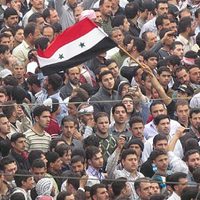If you look closely at the grainy pictures of anti-government protests in Syria, an intriguing symbol emerges: Protesters calling for the end to the dictatorship of President Bashar al-Assad are waving two different versions of the Syrian flag. It may seem like a small detail, but it points to deep divisions among anti-Assad forces -- divisions that are keeping Syrians from coordinating their efforts, sending mixed signals to the international community and creating concerns about how well the fractured opposition's leadership would be able to function if it toppled Assad and suddenly found itself having to build a new government.
For foreign backers of the Syrian opposition, the rifts have created an obstacle to supporting the protesters’ efforts. That explains why there has been great excitement every time it appeared as if the main groups had finally managed to bridge their divisions. Despite a number of efforts, the rifts remain.
Several groups claim to represent the Syrian people. The most widely recognized is the Syrian National Council, made up mostly of exiled Syrians. The SNC, which was officially established five months ago in the city of Istanbul, declared itself the official body of the Syrian opposition. Since then, it has acted as the main interlocutor with international governments and the foreign media outside of Syria. Inside the country, however, not all the people taking part in the demonstrations and braving the bullets of the Assad regime consider the SNC to be their legitimate voice.

